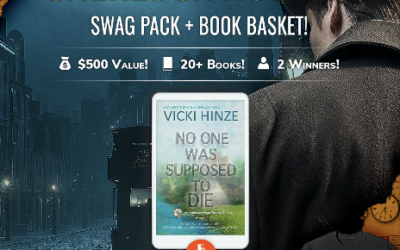WARNING: This is a no-edit zone…
What does a writer do when a novel contains an element that requires a serious suspension of disbelief? How exactly does the writer incorporate that element so that the reader buys into the premise?
The element itself goes a long way toward helping the writer decide the best means for incorporating it.
All storytelling, in some way or another, requires a suspension of disbelief. Writers must convince the reader that the characters are real people, that the events the writer says are happening are events that could happen, that the place where this story occurs is a real place, and these events and these characters are apt to happen and to be in this place.
How do we do that for a novel without an atypical or unusual element?
In a word, details. We convince readers characters are real by giving them attributes typical of many people: Appearances, attitudes, emotions, motivations, and goals; universal emotions (ones we can all understand) and unique traits that single them out as individuals. Three-dimensions: physical, emotional, and spiritual. Then readers have things in common with characters, which means they can relate to them. These common bonds, related through details, assists in making characters “real.”
We convince readers that events are real by using details, testing them for plausibility and testing the events to assure the reader that they are a natural outgrowth of the preceding novel events as those events relate to these specific characters.
An extreme example: A writer wouldn’t write a horrendous snow storm in Florida. In Maine, this would be plausible, possible, and apt to occur. It’d be a freak of nature to occur in Florida—unless the writer prepared a foundation that made it possible.
We convince readers story settings are real by anchoring our settings, giving details common to similar places. Small towns, cities, suburbs all have rhythms, definite ways of life, and the writer taps into them, which gives the illusion that his/her setting is real because it mirrors similar known places.
Example: Ice cream socials are still popular in small towns and rural communities, like Calallen, Texas. But I haven’t seen or heard of one occurring in New Orleans for many, many years. Now that doesn’t mean you can’t use an ice cream social in New Orleans, only that if you do, and you want the reader to believe it, you’d better have the characters set up one for a specific reason that is essential to the plot.
Some writers use indirect methods for gaining the suspension of disbelief, and others hit the reader with the unusual element straight out.
The indirect method is to slowly build a case for the suspension, and to pile on proof (details) that the unusual element is fact. Often, this is done through the observations and testimonies of secondary characters. It’s widely accepted as fact that a reader believes what one character says to another far more readily than the reader believes what an author says to them.
The direct method is one where the writer states a bald fact, and the reader either jumps on board and believes, or s/he doesn’t.
An example: Direct Method.
Blessing or curse, she could hold back time. Not forever, but for moments.
Amanda discovered she had the gift at age three. A candle on her birthday cake had tipped over and threatened to burn her favorite cousin, Carly. Amanda had thought time into stopping, moved Carly’s hand, and then watched the candle fall into the frosting.
No one had said anything, or even noticed. So, Amanda had supposed, holding back time wasn’t anything unusual and everyone could do it.
It wasn’t until much, much later that she discovered they couldn’t. She still remembered the nauseating shock of discovering that, the confusion and then fear. Cold, icy fear. Her grandmother Slade had been different and Amanda had no desire to be different, too. People are mean to you when you’re different.
But that night—the night she made her shocking, sickening discovery that she was exactly like Grandmother Slade—Billy Manson had drowned and Amanda became known as the freak of Carlson County. At fifteen, she had learned the gift that had helped her save Carly from a bad scar would now be the curse that killed her—and there was nothing Amanda could do to stop it.
Okay, that’s admittedly rough writing on the example front, but it’s off the top of my head yet I think it covers the point. The writer doesn’t tell you how, or why, or do much explaining really—though she might or might not later on in the book. She just dumps the way things are out there and you, the reader, can accept
or reject them.
Now, one thing I want you to notice. Holding back time is the curse/ blessing. Isn’t it something we have all wished we could do at some time or another? And it can be used for good or bad, which allows for conflict and
uncertainty.
Note that she’s had this gift since she was a little girl. If she’d developed it later in life, then there probably would need to be an explanation of the inciting incident to encourage the reader to suspend disbelief. Note that there are those who consider a freak because she has this gift. (Perceptions that tug at the emotions are powerful proofs of reality.) Lastly, notice the birthday cake and how she used the gift.
Birthday cakes are relatively universal, and protecting another from harm is completely universal. We can relate and identify, and these oh-so-normal events do help us to suspend disbelief because they mix the known and normal with the unknown, diluting the abnormality in them.
An Example: Indirect Method.
“You did swear to tell the truth, Mrs. St. Germain. Do you really expect this court to believe that this woman, the defendant Amanda Slade, can hold back time?”
“Believe what you will, Mr. Crass.” Millie St. Germain narrowed her gaze on the stuffy prosecutor. “I saw what I saw and I know what I know. That man–” she pointed to a man sitting behind the defendant “–ought to be dead and he ain’t. The bus was barreling down on him, and she–” Millie pointed to Amanda “–dipped down her chin and stared at it, and that bus froze right where it was. Then that Ms. Slade hurried on over and moved the man back onto the curb, where he’d be safe. Then the bus moved again, it’s horn still blowing and its brakes still squealing and spitting smoke up the street.” Millie lifted her chin high enough to park a teacup on it. “I ain’t saying what the lady did or didn’t do. I’m just saying what was.”
“And why do you suppose you weren’t frozen, too?”
“I couldn’t say. Maybe the good Lord knew there’d be a fool like you questioning a miracle and He sent me to keep you from making an idiot of yourself.” She sniffed and looked down her nose at him. “Course, I doubt that’s all together the truth of it, since you’re here being foolish anyhow. Regardless, I ain’t of a mind to question what God does or don’t do. He gave Ms. Slade the power to stop time and save that man’s life. That’s the way of it, and if you object, I reckon you ought to take it up with God and not me, since He’s in charge of handing out special gifts and I ain’t.”
Again, rough writing but I think you get the point. Millie acts as a commentator, a relater who has seen this unusual gift in action and shares her perception of it and of the characters. It’s a gift and she doesn’t second guess gifts.
So through her and her reaction–since we like her and we don’t like the pushy, snooty prosecutor and since Millie considers the gifted Amanda a lady–we readers are more apt to ally ourselves with her and her perceptions than with the prosecutor.
We suspend disbelief because Millie saw and believes and is a blunt and forthright person. See how her emotions, spirituality (frank, forthright) all play into this? We are more willing to believe because she believes.
Note in this method that the writer doesn’t tell us, the readers, anything direct. S/he relates what s/he wants us to know through the characters interactions with each other. Both methods are effective and either is acceptable. As with almost anything else in writing, some stories are better served by one or the other.
This is where you let loose your creativity and try both to see which works hardest for your story. Remember, it isn’t only suspending disbelief that you must do here. You must maintain that suspension of disbelief through the course of the novel. To do it effectively you simply must convince the reader that the element is real. And to convince the reader the element is real, you simply incorporate proof—in the form of details.
©Vicki Hinze. All Rights Reserved.




